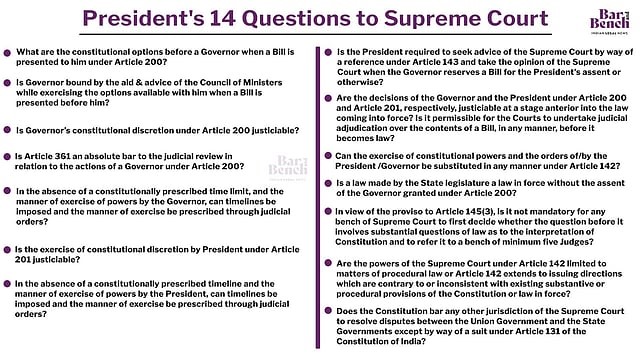Mains Syllabus : GS II - Separation of powers between various organs dispute redressal mechanisms and institutions; Structure, organization and functioning of the Executive and the Judiciary.
Why in the News?
Recently President Droupadi Murmu has invoked the Supreme Court’s advisory jurisdiction on whether timelines could be set for the President and Governors to act on Bills passed by state Assemblies.
What is the Presidential reference?
Article 131 establishes the Supreme Court's original jurisdiction on legal disputes, particularly those between the Union government and states, or between states themselves.

|
Origin of Article 143 |
|
What were previous usages of presidential references?
What are the significances of Presidential references?
What are issues associated with the Presidential reference?
Conclusion
Reference